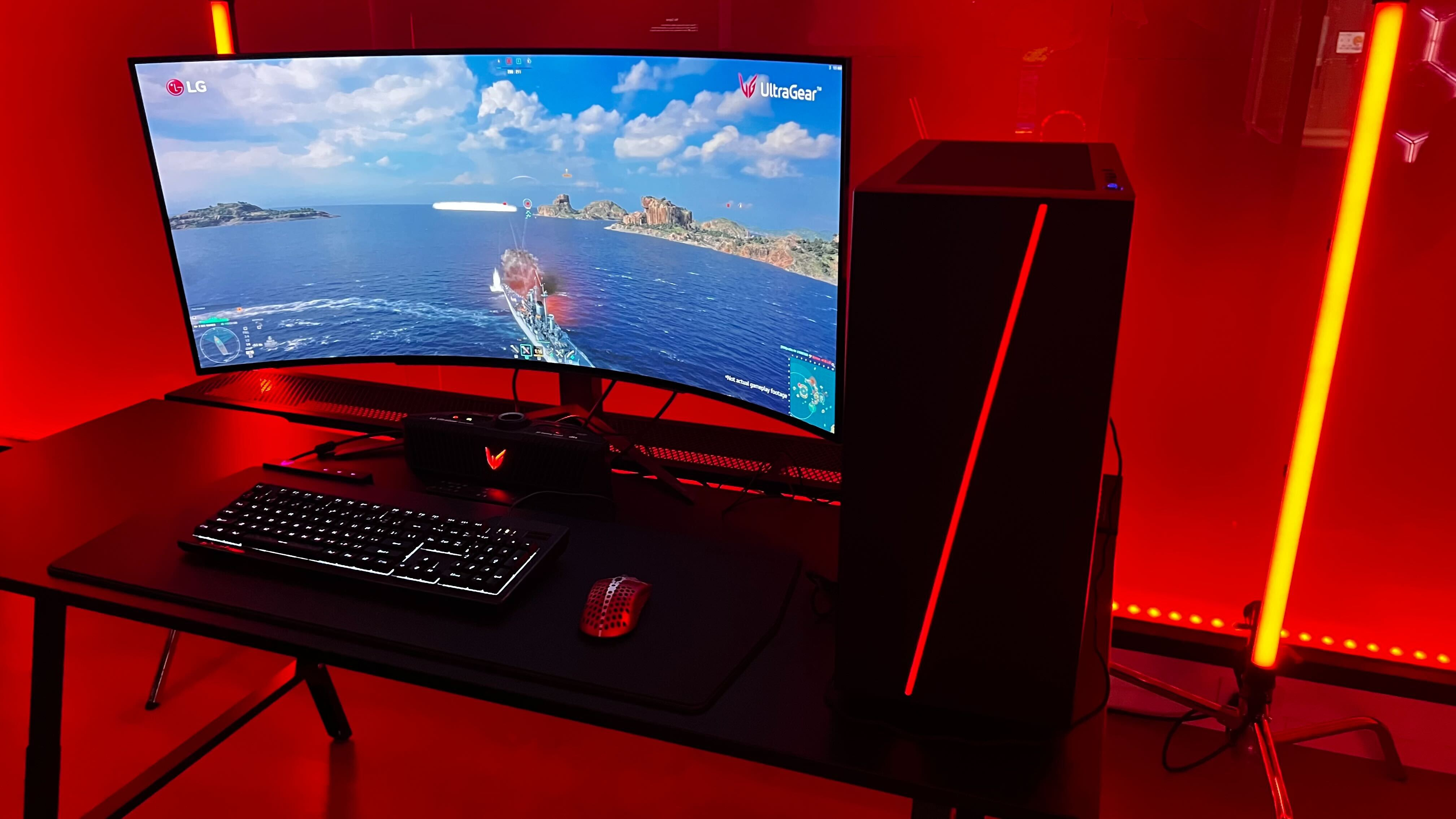
These UltraGear monitors are looking to make that PC gaming sweet spot even sweeter.
Here at PC Gamer, we feel strongly that 1440p is where PC gaming belongs, and no amount of 4K gaming propaganda will change that. So, you can imagine my intrigue when I first heard of LG’s claims of making not only the ‘world’s first’ 240Hz OLED gaming monitors but also the first 1440p 240Hz OLED gaming monitors.
LG invited me to its US Headquarters in New Jersey to get some hands-on time with its new UltraGear 27-inch OLED gaming monitor and the massive UltraGear 45-inch curved OLED. And despite some brightness concerns, I’m itching to embrace this high refresh rate 1440p world after seeing them in action.
The first thing I noticed is that these panels are fast. Both OLEDs sport a refresh rate of 240Hz and a ridiculous low .03ms response rate. For context, the best gaming monitors all have a response rate of 1 millisecond, which is already pretty fast. To be fair, you’d probably see a difference going from 3ms to 1ms, but from 1ms to .03ms, that’s overkill, and I’m here for it.
LG had members of Evil Geniuses playing a couple of live matches of Valorant on each monitor so I could get a sense of the UltraGear’s speed. No doubt, seeing some pro-level competitive gaming really did showcase the smoothness of the display, and honestly defined exactly who would drop more than $1000 on one of these things.
I think it’s the 45-inch UltraGear curved OLED monitor that’s really going to interest a lot of folks. It has exactly the same specs as the smaller (and flatter) 27-inch OLED, but its larger screen gives it more versatility as a display for work and play. And personally, I’ve always been a sucker for a 21:9 aspect ratio. I’m already picturing myself sitting back in my chair soaking in the monster-filled countryside when the Witcher 3 next-gen update goes live.
The gaming PC hooked up to the large curved OLED had an RTX 3060 inside of it and could hit 240Hz at 1440p with no issue (Valorant automatically switched away from the ultrawide aspect ratio). This again makes the argument that 1440p gaming at 240Hz isn’t as demanding on your GPU as, let’s say, trying to play Valorant at 4K at 144Hz.
(Image credit: Future – Jorge Jimenez)
Side by side, I noticed that the color looked much better on the larger monitor. Don’t get me wrong: the colors still looked great on the 27-inch, just less vibrant and more washed.
This leads to my biggest concern: overall brightness. When we first heard of the monitors, we noticed that each of its product pages lists a brightness of 200 nits, which is tragically low by OLED standards. LG is still working on getting me the monitors’ peak brightness since they say the specs on the page don’t paint a full picture. Either way, we will know more once review samples head out into the wild.
(Image credit: Future)
Best gaming monitor: Pixel-perfect panels for your PC
Best high refresh rate monitor: Screaming quick screens
Best 4K monitor for gaming: When only high-res will do
Best 4K TV for gaming: Big-screen 4K PC gaming
LG’s first OLED gaming PC displays are impressively fast, and I can see the appeal of having a 240Hz refresh rate on a 1440p panel. It’s the future I want for PC gaming. But like our own Jeremy Laird wrote today, these first-gen OLED gaming monitors, while gorgeous and fast, aren’t quite ‘truly PC optimized,’ at least not yet. It’ll be interesting to see what other monitor makers like Asus have up their sleeves.
Pre-orders for the 27GR95QE and 45GR95QE are live and expected to ship in early January retail for $999 and $1,699, respectively. LG is also throwing in its fancy UltraGear gaming mouse pad with each pre-order, free of charge. Hey, I never said this high refresh rate 1440p future would be cheap, did I?



